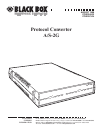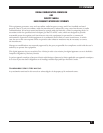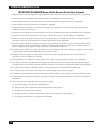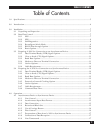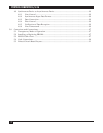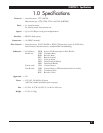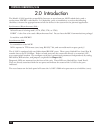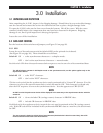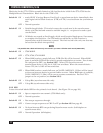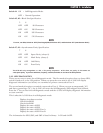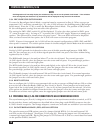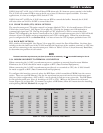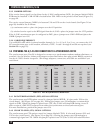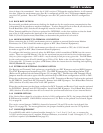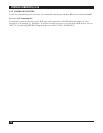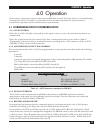
CHAPTER 3: Installation
7
3.0 Installation
3.1 UNPACKING AND INSPECTION
After unpacking the A/S-2G, inspect it for shipping damage. Should there be any noticeable damage,
save the cartons and contact the carrier who delivered the box to place a freight damage claim.
To open the A/S-2G, take out the four screws from the bottom. Lift off the cover. With the cover
removed, visually inspect for components that may have been loosened in shipment. Shipping
damage is rare, but a quick inspection is always good practice.
Leave the cover off for installation.
3.2 DATA FLOW CONTROL
For the locations of the switches and jumpers, see Figure 5-2 on page 28.
3.2.1 SW3
Locate the set of 8 asynchronous switches labeled SW3 on the printed circuit board.
(See Figure 5-2 on page 28.) These should be set as follows:
Switch #l ON = echo asynchronous characters — echoplex mode.
OFF = don’t echo asynchronous characters — normal mode.
Set this switch ON when the asynchronous device expects to receive an echo of its transmitted data.
NOTE
The A/S-2G always operates in half-duplex mode on the synchronous side, so this option applies only to the
asynchronous device.
Switch #2 ON = echo “EOT” character.
OFF = don’t echo “EOT” character.
The last record received from the asynchronous device must be terminated with a “Control D” character. For this
character to echo to the asynchronous device, switch #2 must be ON. This character is echoed only
after the EOT sequence is sent to the synchronous device. Its echo appears as a CR LF, EOT.
NOTE
An EOT from the bisynchronous device will be displayed in the same way to the asynchronous device with this
switch ON.
Switch #3 ON = do not include CR (carriage return) character in EBCDIC data.
OFF = include CR character in EBCDIC data
Each block sent by the asynchronous device (except the last one) must be terminated with a CR (carriage return)
code. If this CR code will be included in the synchronous EBCDIC data as a new line, this switch must
be OFF.
NOTE
The 3741 protocol is limited to a block size of 128 characters (the block size is also the record size), thus a CR
must be entered not later than each 128 characters.



